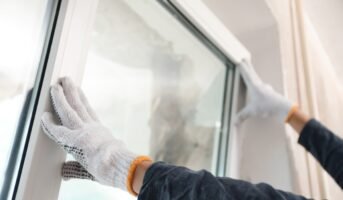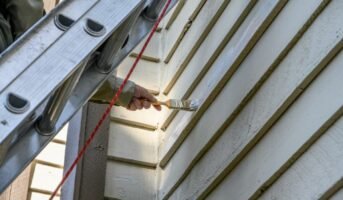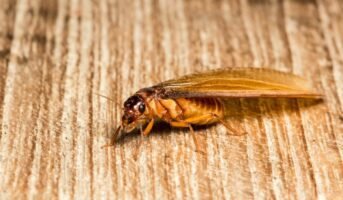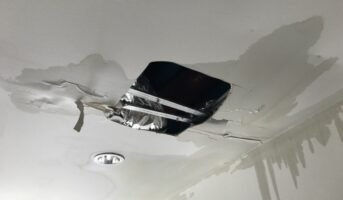Cleaning wood floors is not just a chore; it’s a crucial aspect of preserving the allure and durability of these elegant surfaces, which often serve as a significant investment in your home. Implementing proper care practices will undoubtedly contribute to the long-lasting appeal of your wood floors. Wood floors bring warmth, elegance, and a timeless appeal to homes, making them a popular choice for many homeowners. However, to keep these beautiful surfaces looking their best, proper cleaning and maintenance are essential. In this comprehensive guide, we’ll delve into the step-by-step process of cleaning wood floors, addressing both daily care and deeper cleaning methods.
How to clean and maintain wood floors?
Regular dusting
Utilise tools such as a soft-bristle broom, a microfiber dust mop, or a vacuum cleaner with a soft brush attachment to efficiently remove dust and debris. The recommended frequency is to dust at least once a day or as needed, preventing potential scratches caused by dirt particles.
Spot cleaning
For spot cleaning, employ a slightly dampened microfiber cloth or mop. Wipe up spills promptly to prevent water damage, and for sticky substances like gum or food, use an ice pack to harden the material before gently scraping it off.
Weekly cleaning
Utilise well-wrung-out damp, a microfiber mop, or a specialised wood floor cleaner for weekly cleaning. Mix a small amount of a pH-neutral wood floor cleaner with water according to the product’s instructions. Mop the floor, ensuring the mop is only slightly damp to avoid excess water on the wood.
Deep cleaning
Deep cleaning, typically performed periodically, requires a wood floor cleaner specifically designed for this purpose, a soft-bristle brush, and a bucket. Dilute the cleaner according to the instructions, apply the solution with a soft-bristle brush, working in small sections, and wipe away excess cleaner with a damp cloth.
Avoid excess moisture
Excess moisture can be detrimental to wood floors, causing warping and damage. Always ensure your mop or cloth is well-wrung out before cleaning to minimise the risk of introducing excessive water to the wood.
Protective measures
Implement protective measures such as using rugs or mats in high-traffic areas and near entrances to prevent dirt and debris from being tracked onto the wood floor. Additionally, place felt protectors on the legs of furniture to avoid scratches.
Avoid harsh chemicals
Many commercial cleaners can damage the finish of wood floors. It is advisable to stick to products specifically designed for wood to ensure the preservation of the floor’s integrity.
Humidity control
Wood’s sensitivity to changes in humidity can lead to expansion and contraction. Maintain a consistent humidity level to prevent warping or cracking, thereby safeguarding the long-term condition of the wood.
Periodic refinishing
Depending on wear and tear, consider refinishing your wood floors every few years to restore their original lustre, keeping them looking as good as new.
Professional inspection
If significant damage or wear is noticed, consulting with a professional is advisable. Professionals can provide advice on repair or refinishing, ensuring the structural and aesthetic integrity of the wood floors.
Additional tips
Consider avoiding high heels or shoes with cleats on wood floors to prevent scratches and dents. Regularly trim pets’ nails to minimise the risk of scratches, and when using a vacuum cleaner, opt for a soft brush attachment to prevent any potential damage to the wood surface.
FAQs
Can I use any cleaner on my wood floors?
It's crucial to use cleaners specifically designed for wood floors. Avoid harsh chemicals that may damage the finish. Always follow the manufacturer's recommendations.
What's the best way to prevent scratches on wood floors?
Implement protective measures such as using rugs or mats in high-traffic areas, placing felt protectors on furniture legs, and avoiding high heels or shoes with cleats.
How do I deal with spills on wood floors?
Wipe up spills immediately to prevent water damage. For sticky substances, use an ice pack to harden the material before gently scraping it off.
Is it necessary to hire professionals for wood floor maintenance?
While routine cleaning can be done by homeowners, professionals may be consulted for deep cleaning, refinishing, or addressing significant damage. Their expertise can ensure proper care.
Can wood floors be damaged by excess moisture?
Yes, excess moisture can lead to warping and damage. It's essential to use a well-wrung-out mop or cloth and promptly address spills to prevent water penetration.
How often should wood floors be refinished?
The frequency of refinishing depends on wear and tear. Consider refinishing every few years to restore the original lustre and protect the wood.
Can I use a vacuum cleaner on wood floors?
Yes, but it's advisable to use a vacuum cleaner with a soft brush attachment to prevent potential damage.
| Got any questions or point of view on our article? We would love to hear from you. Write to our Editor-in-Chief Jhumur Ghosh at jhumur.ghosh1@housing.com |

Shimon Oberoi, an economics graduate from Rajdhani College, University of Delhi, strives to simplify the real estate world through her compelling and well-researched content. She has experience in domains like entertainment and economic concepts, among others. When not creating content, she enjoys watching movies, listening to music, and reading fictional books.












